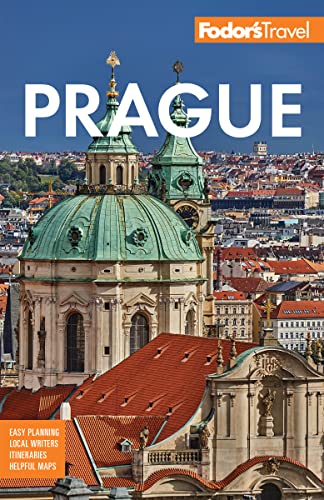For centuries Prague had an active, vital Jewish community that was an exuberant part of the city’s culture. Much of that activity was concentrated in Josefov, the former Jewish ghetto, just a short walk north of Old Town Square. This area first became a Jewish settlement around the 12th century, but it didn't actually take on the physical aspects of a ghetto—walled off from the rest of the city—until much later.
The history of Prague's Jews, like those of much of Europe, is mostly a sad one. There were horrible pogroms in the late Middle Ages, followed by a period of relative prosperity under Rudolf II in the late 16th century, though the freedoms of Jews were still tightly restricted. It was Austrian Emperor Josef II—the ghetto's namesake—who did the most to improve the conditions of the city's Jews. His "Edict of Tolerance" in 1781 removed dress codes for Jews and paved the way for Jews finally to live in other parts of the city.
The prosperity of the 19th century lifted the Jews out of poverty, and many of them chose to leave the ghetto. By the end of the century the number of poor gentiles, drunks, and prostitutes in the ghetto was growing, and the number of actual Jews was declining. At this time, city officials decided to clear the slum and raze the buildings. In their place they built many of the gorgeous turn-of-the-20th-century and art nouveau town houses you see today. Only a handful of the synagogues, the town hall, and the cemetery were preserved.
World War II and the Nazi occupation brought profound tragedy to the city's Jews. A staggering percentage were deported—many to Terezín, north of Prague, and then later to German Nazi death camps in Poland. Of the 40,000 Jews living in Prague before World War II, only about 1,200 returned after the war, and merely a handful live in the ghetto today.
The Nazi occupation contains a historic irony. Many of the treasures stored away in Prague's Jewish Museum were brought here from across Central Europe on Hitler's orders. His idea was to form a museum dedicated to the soon-to-be extinct Jewish race.
Today, even with the crowds, the ghetto is a must-see. The Old Jewish Cemetery alone, with its incredibly forlorn overlay of headstone upon headstone going back centuries, merits the steep admission price the Jewish Museum charges to see its treasures. Don't feel compelled to linger long on the ghetto's streets after visiting, though—much of it is tourist-trap territory, filled with overpriced T-shirt, trinket, and toy shops—the same lousy souvenirs found everywhere in Prague.
A ticket to the Židovské muzeum v Praze (Prague Jewish Museum) includes admission to the Old Jewish Cemetery and collections installed in four surviving synagogues and the Ceremony Hall. The Staronová synagóga, or Old-New Synagogue, a functioning house of worship, does not technically belong to the museum, and requires a separate admission ticket.






